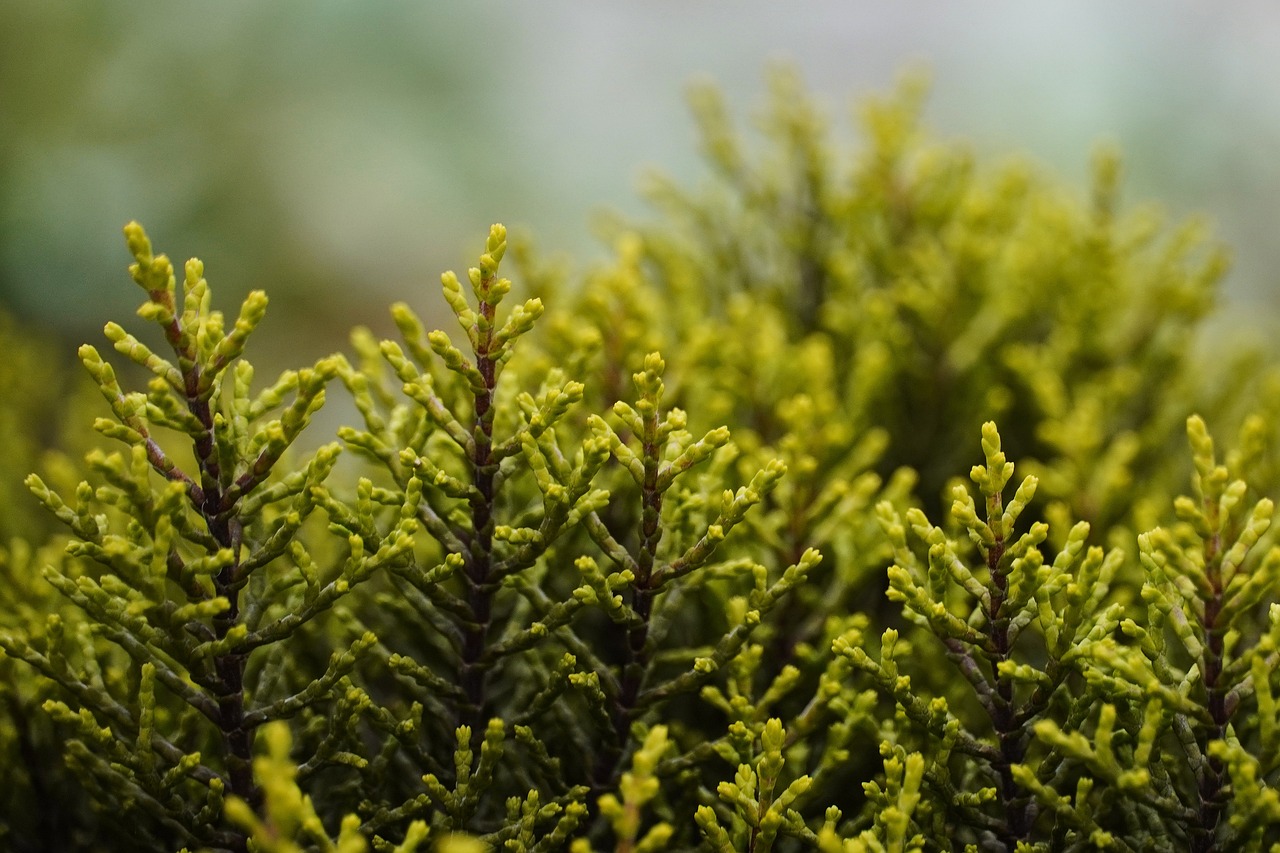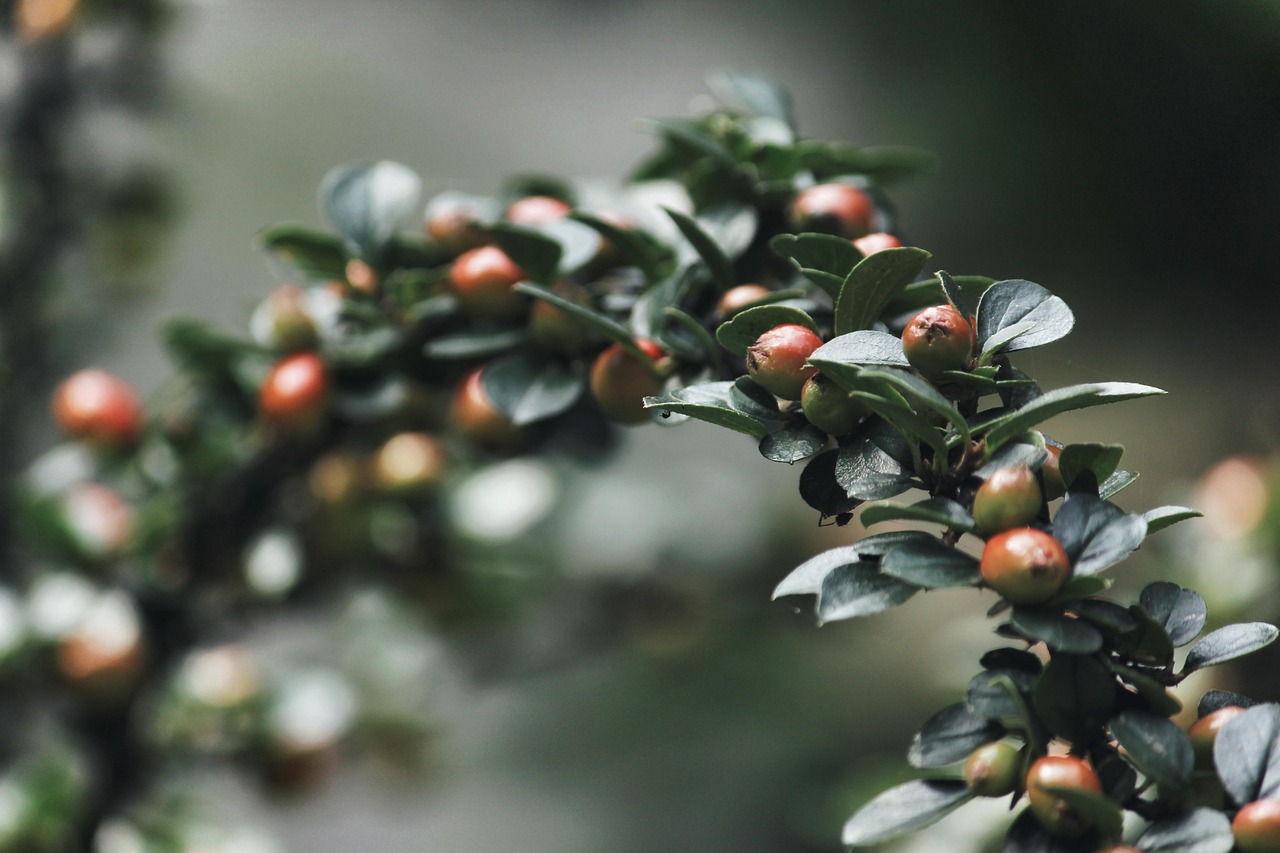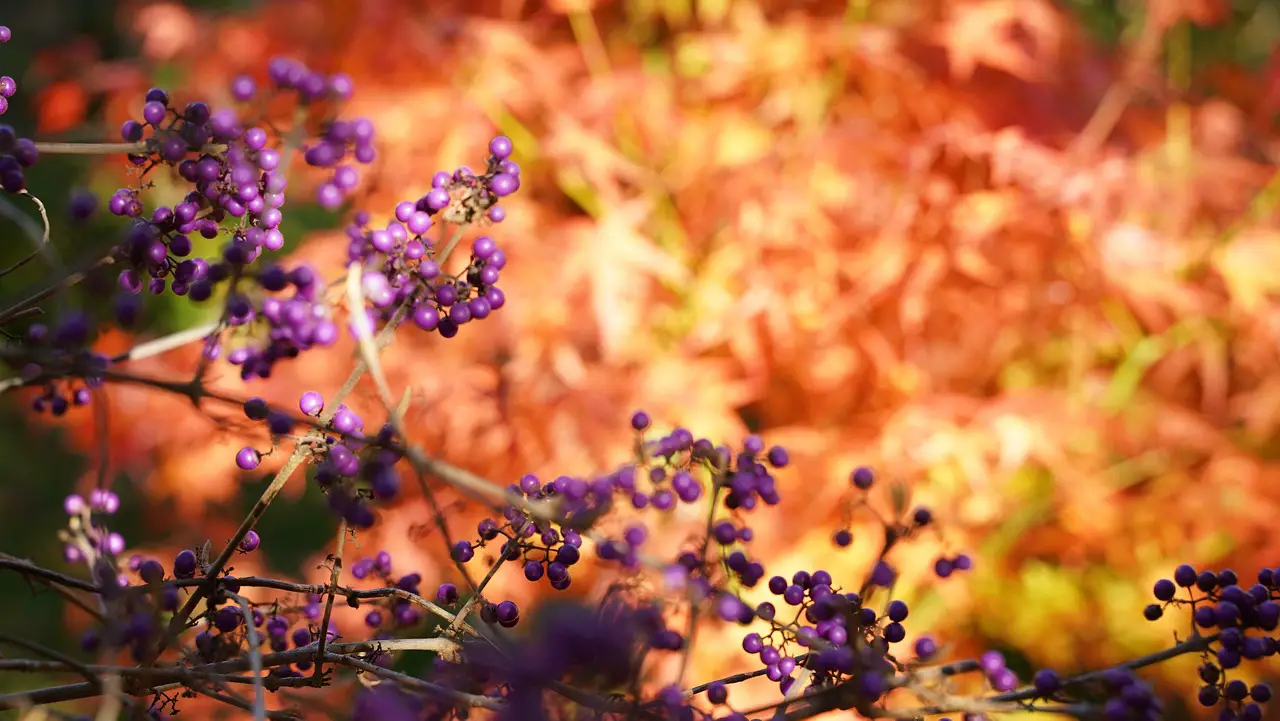Beautyberries, known scientifically as Callicarpa, are captivating shrubs celebrated for their vibrant, jewel-toned berries. These stunning plants not only enhance gardens but also attract wildlife. Let’s delve into the fascinating world of beautyberries, exploring their characteristics, habitat, and ecological importance.
Beautyberries belong to the Lamiaceae family, which also includes mint and sage. They are deciduous shrubs native to Asia and North America. The most commonly known species is Callicarpa americana, which thrives in the southeastern United States. The striking appearance of their berries, which can range from lavender to deep purple, makes them a favorite among gardeners seeking unique plants.

These shrubs typically grow between 3 to 6 feet tall and can spread as wide as 8 feet. Beautyberries produce small, pale pink or white flowers in late summer. However, it is the brilliant berries that emerge in clusters during autumn that truly captivate observers. The berries are not only visually appealing but also serve a crucial role in the ecosystem.
| Characteristic | Description |
|---|---|
| Scientific Name | Callicarpa |
| Family | Lamiaceae |
| Height | 3 to 6 feet |
| Spread | Up to 8 feet |
| Flower Color | Pale pink or white |
| Berry Color | Lavender to deep purple |
Growth Conditions and Care
Beautyberries thrive in well-draining soil and prefer full sun to partial shade. They are relatively low-maintenance and can adapt to various soil types, although they flourish best in slightly acidic to neutral conditions. When planting beautyberries, consider the following care tips:
- Water regularly until established.
- Prune in late winter to promote healthy growth.
- Mulch around the base to retain moisture and suppress weeds.
These shrubs are resilient and can tolerate drought once established. However, they do better with consistent moisture during dry spells. Fertilization is generally not necessary but can be applied in early spring if the soil is particularly poor.
Ecological Benefits
The beautyberry shrub is not just a decorative addition to landscapes; it plays an important role in supporting local ecosystems. The berries are a food source for a variety of birds and small mammals during the fall and winter months. Additionally, beautyberries attract pollinators such as bees and butterflies when they bloom in summer.
By planting beautyberries, gardeners can contribute to biodiversity in their local area. These shrubs provide shelter and food for wildlife, making them an excellent choice for eco-friendly landscaping. As urban areas expand, incorporating native plants like beautyberries helps maintain the natural balance of local ecosystems.
Culinary Uses of Beautyberries

While beautyberries are primarily known for their ornamental value, they also have a place in culinary applications. The berries, although not commonly consumed fresh due to their slightly bitter taste, can be used to create various delicious products. Here are some popular culinary uses for beautyberries:
- Jams and Jellies: Beautyberries can be cooked down with sugar and pectin to create vibrant jams or jellies. The unique flavor adds a distinctive touch to breakfast spreads.
- Wine: The berries can be fermented to produce homemade wine. This process yields a sweet, fruity beverage that showcases the unique essence of beautyberries.
- Tea: Dried beautyberry leaves and berries can be steeped to make herbal tea. This tea can offer a mild flavor and is rich in antioxidants.
- Baking: Incorporating beautyberry puree into muffins or pancakes can enhance flavor and color. This adds a nutritional boost while impressing guests.
Propagation Methods

Understanding how to propagate beautyberries is essential for gardeners looking to expand their collection. There are several methods to propagate these shrubs, each with its advantages.
Seed Propagation
One method of propagation involves collecting seeds from ripe beautyberries. Here’s a simple step-by-step guide:
- Gather ripe beautyberries from the shrub in late fall.
- Remove the seeds from the berries and rinse them thoroughly.
- Soak the seeds in water for 24 hours to enhance germination.
- Sow the seeds in pots filled with seed-starting mix and cover lightly with soil.
- Keep the soil moist and place the pots in a warm, sunny location.
- Transplant seedlings into larger pots or directly into the garden after the last frost.
Cutting Propagation
An alternative way to propagate beautyberries is through stem cuttings. This method ensures that the new plants will maintain the characteristics of the parent plant.
- In late spring or early summer, select healthy stems from an existing beautyberry shrub.
- Cut 4-6 inch sections of the stem just below a leaf node.
- Remove leaves from the lower half of each cutting.
- Dip the cut end in rooting hormone to encourage root growth.
- Plant the cuttings in a pot with well-draining soil and water lightly.
- Cover the pot with a plastic bag or dome to maintain humidity until roots develop.
Pests and Diseases
Beautyberries are generally resilient plants; however, they can be susceptible to certain pests and diseases. Awareness of these issues helps gardeners take preventive measures. Common pests include:
- Aphids: These small insects suck sap from the leaves, potentially causing stunted growth. Regularly inspecting plants can help catch infestations early.
- Spider Mites: These pests thrive in dry conditions and can lead to leaf discoloration. Increasing humidity around plants can help deter them.
In terms of diseases, beautyberries may be affected by root rot if planted in poorly draining soil. Ensuring adequate drainage and avoiding overwatering can significantly reduce this risk.
Regular monitoring and proper care can help keep beautyberry shrubs healthy and vibrant, allowing gardeners to enjoy their stunning appearance and ecological benefits for years to come.

Designing with Beautyberries in the Landscape
Beautyberries can serve as stunning focal points in gardens and landscapes. Their vibrant clusters of berries create a striking visual display, especially in the fall. When incorporating beautyberries into your landscape design, consider the following approaches:
Choosing the Right Location
Beautyberries thrive best in locations that receive full sun to partial shade. They can be used effectively in various settings, including:
- Foundation Plantings: Positioning beautyberries near the base of a home can add color and texture against exterior walls.
- Mixed Borders: Combining beautyberries with other shrubs and perennials can create a dynamic and colorful garden border.
- Wildlife Gardens: Planting beautyberries in wildlife-friendly gardens attracts birds and beneficial insects, enhancing biodiversity.
Companion Planting
Beautyberries pair well with various other plants, enhancing both their aesthetic appeal and ecological function. Consider these compatible companions:
- Native Grasses: Pairing beautyberries with native grasses creates a naturalistic look while providing habitat for wildlife.
- Flowering Perennials: Plants such as echinacea (coneflower) and rudbeckia (black-eyed Susan) add color during the summer months, complementing the fall berries.
- Other Shrubs: Incorporating shrubs like viburnum or holly can create a layered effect that provides year-round interest.
Seasonal Interest
Beautyberries offer significant seasonal interest throughout the year. Understanding their characteristics across seasons can help maximize their impact in the garden.
Spring and Summer
In spring, beautyberries produce delicate flowers that attract pollinators. These small pink or white blooms typically appear in clusters, adding subtle charm to the landscape. As summer progresses, lush green foliage provides a backdrop for the developing berries.
Autumn
As autumn arrives, beautyberries truly shine. The berries transition from green to vibrant shades of purple or lavender, creating eye-catching clusters that stand out against the changing leaves. This seasonal transformation not only enhances garden aesthetics but also serves as a food source for birds preparing for winter.
Winter
Even in winter, beautyberry shrubs maintain interest. The bare branches can showcase the remaining berries, which often persist long after the leaves have fallen. This feature provides visual appeal during the colder months, making beautyberries a valuable addition to winter landscapes.
Beautyberry Variants
While Callicarpa americana is the most well-known species, several other varieties of beautyberry exist, each offering unique characteristics. Here are some notable variants:
- Callicarpa japonica: Native to Japan, this variety produces smaller berries and is typically more compact than its American counterpart.
- Callicarpa dichotoma: Known as the Chinese beautyberry, it features attractive purple berries and has a more upright growth habit.
- Callicarpa bodinieri: This species is popular for its abundant fruit and beautiful foliage, making it a great choice for ornamental gardens.
Each variant can be selected based on specific garden needs and aesthetic preferences. Understanding their unique growth habits and berry colors can enhance your landscape design significantly.
Incorporating beautyberries into your garden not only adds visual intrigue but also fosters ecological benefits, creating a harmonious balance between beauty and nature.
Additional Uses of Beautyberries
Beyond their ornamental and ecological benefits, beautyberries have various practical uses that enhance their value in gardens and landscapes. Here are some additional applications:
- Medicinal Uses: In traditional medicine, some cultures have utilized beautyberry leaves and roots for their potential health benefits. They have been used to treat ailments such as inflammation and digestive issues.
- Crafts and Decorations: The vibrant berries can also be used in craft projects. They can be dried and incorporated into wreaths or centerpieces, adding a natural touch to decorations.
- Natural Dye: The berries can be used to create natural dyes. When boiled, they yield beautiful shades of purple, which can be used for dyeing fabrics or yarns.
These varied uses make beautyberries versatile additions to any garden, offering both beauty and functionality.
Challenges and Considerations
While beautyberries are generally easy to care for, there are challenges that gardeners may face. Awareness of these issues can help prevent problems:
- Invasive Potential: In some regions, beautyberries can become invasive if not properly managed. Regular pruning and monitoring are necessary to control their spread.
- Wildlife Management: While attracting wildlife is beneficial, it can also lead to unwanted pests. Gardeners should be prepared for birds and mammals that may consume the berries or disrupt the garden.
- Seasonal Maintenance: Although beautyberries are low-maintenance, they still require seasonal care such as pruning and monitoring for pests, especially after the berry-bearing season.
Understanding these challenges allows for better management of beautyberries, ensuring they flourish without becoming problematic.
Final Thoughts
Beautyberries truly embody the charm of nature with their stunning appearance and ecological significance. As versatile shrubs, they enhance gardens with their vibrant berries while providing essential resources for wildlife. Their adaptability to various garden settings makes them suitable for both novice and experienced gardeners alike.
Incorporating beautyberries into your landscape design not only adds visual interest through different seasons but also supports local ecosystems. With their ability to thrive in a range of conditions and offer culinary, medicinal, and craft possibilities, beautyberries prove to be a valuable addition to any garden.
As awareness grows about the importance of native plants in maintaining biodiversity, beautyberries stand out as an excellent choice. They not only beautify the landscape but also contribute to the health of the environment. Embrace these jeweled berries in your gardening endeavors and enjoy the myriad benefits they provide.
